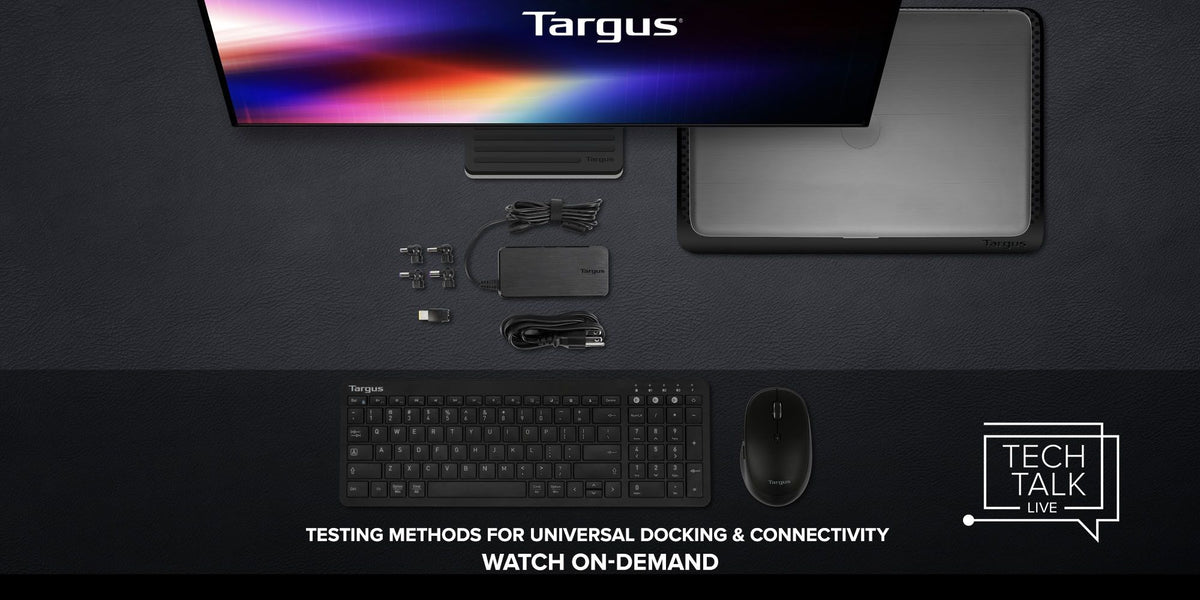How Targus Tests Docking Stations for Universal Device Compatibility

Learn about the common engineering tests that ensure universal compatibility, quality, and longevity in our Universal Docking Solutions
Businesses and consumers alike turn to Targus docking stations for innovation, quality, and truly universal compatibility. To achieve this, our docks undergo rigorous engineering tests. During a recent Tech Talk webinar, our resident Targus DocKter, Sr. Director of Engineering Kevin Quinn, shared insights into Targus’ testing philosophy and methodology.
Ever wondered what goes into validating universal docking solutions? Check out the webinar on demand or read on for the excerpts.
Targus always tests and validates its docks before users do!
There are too many products on the market for end users to test, before going through the proper paces to prove that they work. This approach isn’t acceptable, especially when it comes to enterprise docks. Beyond striving to understand whether the product works, Targus makes sure all docks meet the required specifications, certifies those requirements are satisfied, and that failures are uncovered and fixed before they are launched.
It's critical to identify issues as early as possible
To identify issues, Targus conducts rigorous engineering, factory, and exclusive tests, such as testing of consistencies and inconsistencies, as well as its own comprehensive performance tests.
We strive for better than five nines field up time
Targus strives for “five nines uptime,” meaning, over a year, the system has been operational or in standby 99.999% of the time in a year. However, there are caveats. Testing is not done on your network, with your security, management tools, or with extreme or chronic conditions.
Explore more Tech Talk topics or contact our Targus DocKters to discuss your specific use cases for universal docking and connectivity.
.


